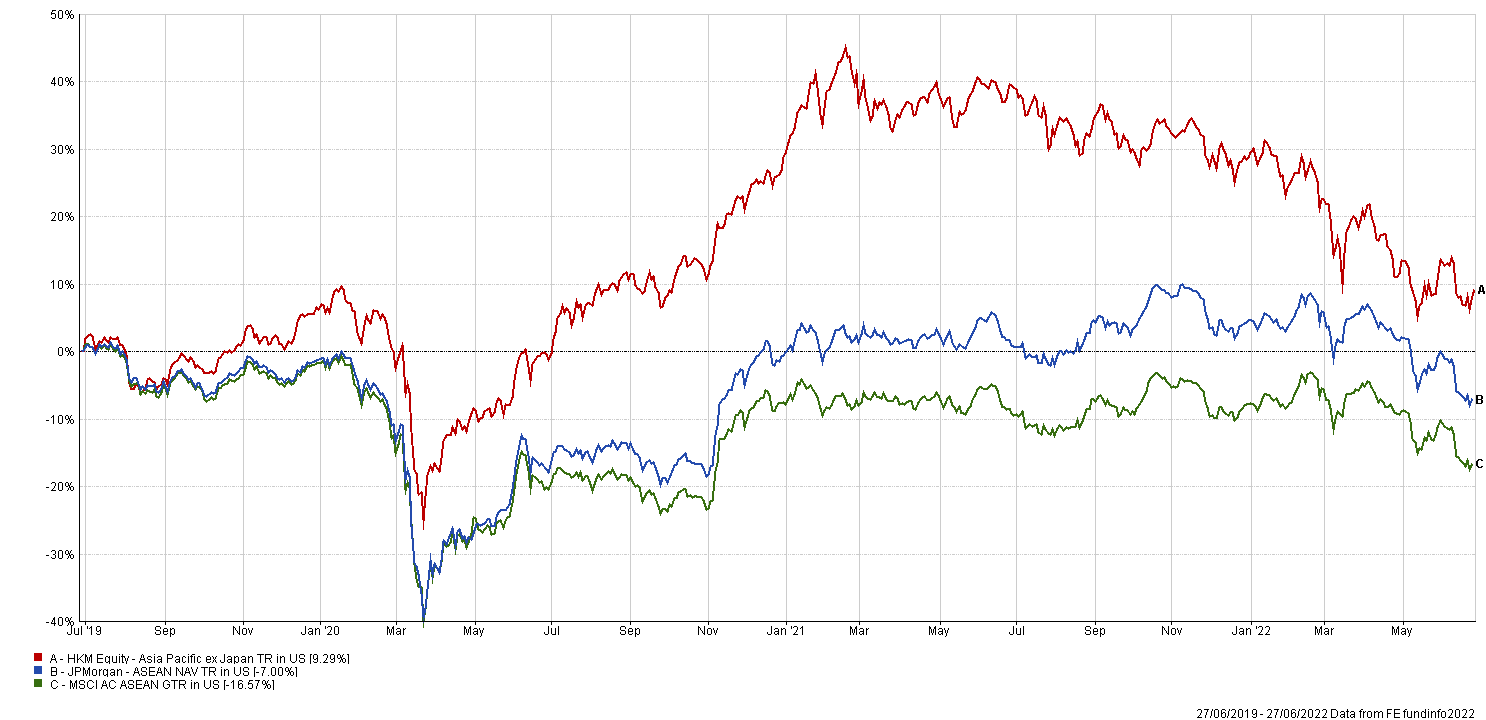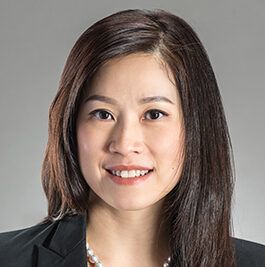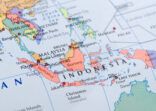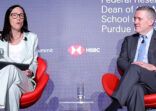Pauline Ng, JPMAM
With global economic growth decelerating, JPMAM is starting to see opportunities again in the Asean region, said Pauline Ng, portfolio manager for JPMorgan Asean Fund, in an interview with FSA.
This growth can be attributed to reopening themes and the return of tourism in many of the Asean economies.
“The Google mobility index on retail and recreation activity suggests a sharp recovery of economic activities in Asia after the Omicron wave following the sharp pick-up in vaccination rates, with Singapore, Malaysia and Vietnam having the highest rates around the world,” said Ng.
“Moreover, Singapore and Thailand eased travel restrictions, and the return of tourism will definitely help boost domestic spending.”
A new era
She believes the Asean market has reached “the light at the end of the tunnel”, after an almost decade-long underperformance compared with North Asia since 2013.
Ng noted that the region had outperformed in the decade prior to 2013 supported by higher commodity prices and the recovery from the Asian financial crisis in 1997, and believes the current market environment of higher commodity prices would benefit the region once again.
While Asean is still beginning to reverse its relative performance with North Asia, Ng thinks the region continues to offer both cyclical and structural investment opportunities.
“The region is relatively insulated from geopolitical tensions in Europe and North Asia and thus sees less direct impact from geopolitical events on its economy and assets,” said Ng.
For instance, Russia and Ukraine account for less than 1% of Asean exports, she added.
Higher commodity prices have been a net positive for commodity exporters in the region, such as Indonesia and Malaysia, and markets with more energy-related stocks, such as Thailand.
Ng manages the $1.33bn JPMorgan Asean Fund together with Desmond Loh, Stacey Neo, and Chang Qi Ong. The fund has a long tracking record and was first launched in 1983. The annual management fee is 1.5%.
JPMorgan Asean Fund is mandated to invest at least 70% of its assets in equities derived from one or more of the Asean countries.
According to its latest fund factsheet dated 30 April, Singapore is the largest market to which the fund allocates (30%), followed by Indonesia (24.1%) and Thailand (21.2%).
The biggest exposure of the fund is to the financials sector (44.3%), with six of the top 10 holdings financials companies.
“The earnings growth in Asean is currently led by old economy, leading the way is financials,” said Ng.
“Even though Asean banks had to take additional provisions because of Covid disruptions, they did it from a position of strength where their capital positions and liquidity ratios were very healthy, thanks to the strong balance sheet.”
It is followed by communications services (12.3%) and industrials (8.2%).
The fund posted a cumulative return of -7% over the last three years, compared with the MSCI Asean index average of -16.6% and the Apac ex Japan equity sector average of 11.7%, according to FE Fundinfo.
JPMorgan ASEAN Fund vs index average vs sector average

Investment process
The JP Morgan Asean Fund primarily relies on bottom-up stock selection, while also taking top-down considerations.
By combining the views of its Asean country specialists and sector research analysts, the asset manager aims to construct a relatively concentrated portfolio.
JPMAM also takes ESG considerations in its investment process into account by identifying quality companies with sustainable growth, said Ng.
“We address ESG issues during three stages of our investment process, namely research approach, engagement and portfolio construction,” said the portfolio manager.
“During the research approach stage, we use an internal strategic classification framework to assess both a business’s long-term value and leverage an ESG materiality framework to help manage risks of the portfolio.”

















